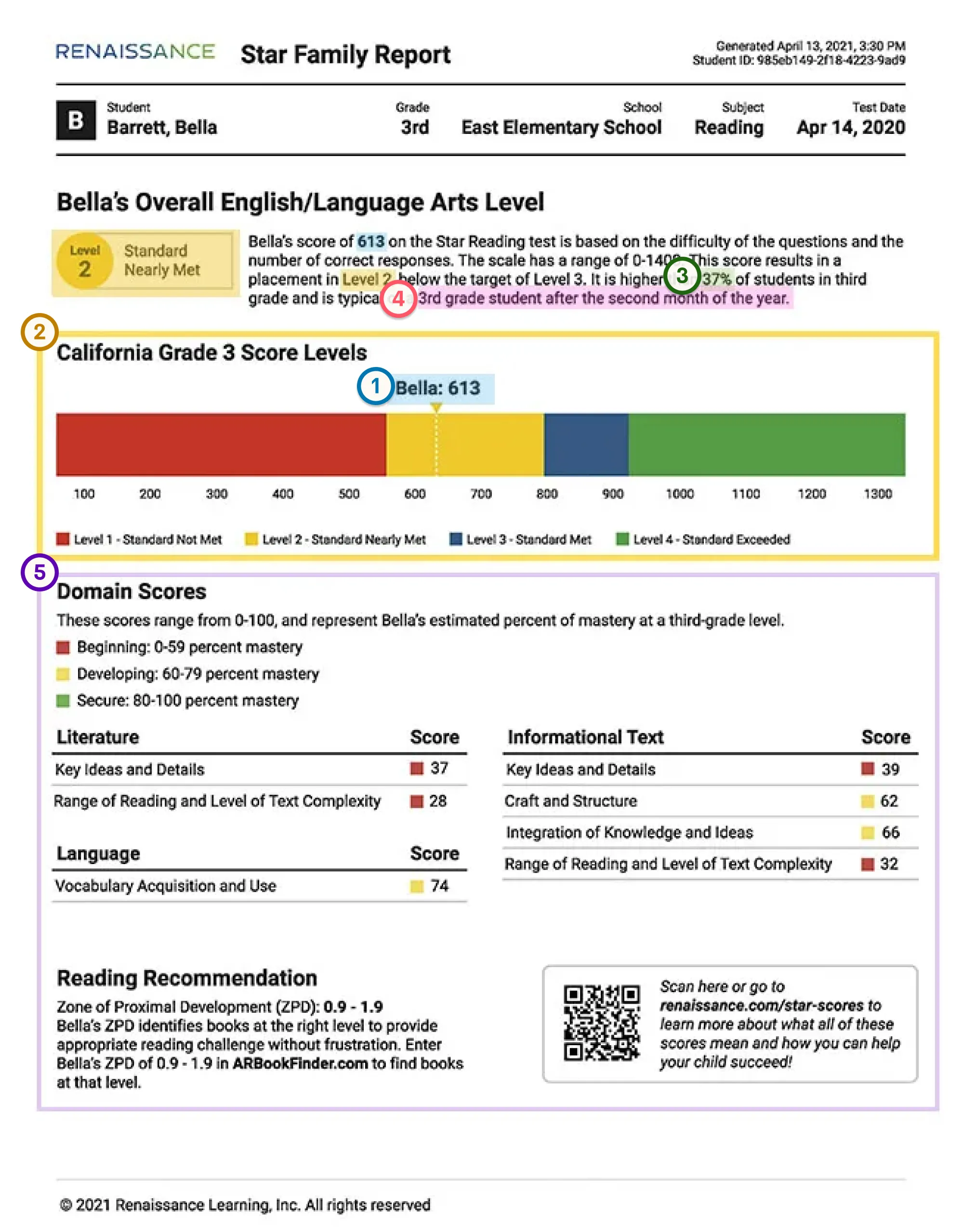Here is a sample report. These scores will not match your child’s scores.
Bella’s score of 613 on the Star Reading test results in a placement in Level 2, below the target of Level 3. This score is higher than 37% of students in third grade and is typical of a 3rd grade student after the second month of the year.


